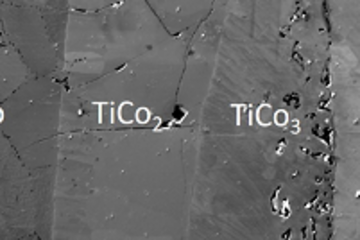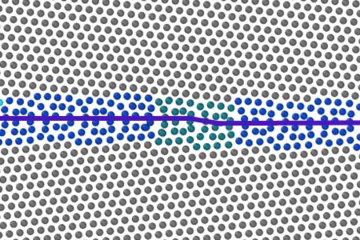All genres
241.
Talk
Ab initio description of the Ti bcc to omega transition at finite temperatures. DPG-Frühjahrstagung 2015, Berlin, Germany (2015)
242.
Talk
Magnon-Phonon-Coupling in Fe. ICAMS Retreat 2015 , Soest, Germany (2015)
243.
Talk
Multiscale modelling of hydrogen embrittlement in metals. DPG Spring Meeting, Berlin, Germany (2015)
244.
Talk
Thermodynamics of the Q phase in Al–Mg–Cu–Si. ICAMS Scientific Retreat, Soest, Germany (2015)
245.
Talk
Adaptive C content in coherently strained kappa-carbides - An ab initio explanation of atom probe tomography data. 2nd German-Austrian Workshop on "Computational Materials Science on Complex Energy Landscapes", Kirchdorf, Austria (2015)
246.
Talk
The itinerant coherent potential approximation for phonons: Role of fluctuations for systems with magnetic disorder. 2nd German-Austrian Workshop, Kirchdorf, Austria (2015)
247.
Talk
Thermodynamic phase stability in the Al–Sc system using first principles methods. 2nd German-Austrian Workshop on "Computational Materials Science on Complex Energy Landscapes", Kirchdorf, Austria (2015)
248.
Talk
Ab initio insights into the interaction of hydrogen with precipitates in steels. Workshop on Hydrogen Embrittlement and Sour Gas Corrosion 2015, Düsseldorf, Germany (2015)
249.
Talk
Ab initio description of the Ti bcc to omega transition at finite temperatures. PTM 2015, International Conference on Solid-Solid Phase Transformations in Inorganic Materials, Whistler, BC, Canada (2015)
250.
Talk
Temperature dependent magnon-phonon coupling. 2nd German-Austrian Workshop, Kirchdorf, Austria (2015)
251.
Talk
First-principles study of thermodynamic properties of the Q phase in Al–Cu–Mg–Si. Calphad XLIV, Loano, Italy (2015)
252.
Talk
First-principles study of thermodynamic properties of the Q-phase in Al–Cu–Mg–Si. 2nd German-Austrian Workshop, Kirchdorf, Austria (2015)
253.
Talk
Atomistic origin of structural modulations in Fe ultrathin films on Cu(001). 2nd German-Austrian Workshop, Kirchdorf, Austria (2015)
254.
Talk
Understanding complex materials at finite temperatures by ab inito methods. Colloquium at Institut für Materialwissenschaft, Universtität Stuttgart, Stuttgart, Germany (2014)
255.
Talk
Designing bulk nanostructured high manganese steels by intregrating advanced characteriation and ab initio modeling. 2nd International Conference on High Manganese Steels - HMnS 2014, Aachen, Germany (2014)
256.
Talk
Ab initio determination of point defects and derived diffusion properties in metals. International conference on diffusion in materials, DIMAT2014, Münster, Germany (2014)
257.
Talk
Ab initio basierte Methoden der mechanismen-orientierten Werkstoffentwicklung. Colloquium at Salzgitter-Mannesmann-Forschung GmbH, Duisburg, Germany (2014)
258.
Talk
Ab initio based understanding of the segregation and diffusion mechanisms of hydrogen in steels. SteelyHydrogen 2014, International conference on hydrogen in steels, Ghent, Belgium (2014)
259.
Talk
Impact of light elements on interface properties in steels. CECAM workshop “Modeling Metal Failure Across Multiple Scales”, Lausanne, Switzerland (2014)
260.
Talk
Understanding complex materials at finite temperatures by ab inito methods. Physikalisches Kolloquium der TU Chemnitz, Chemnitz, Germany (2014)











